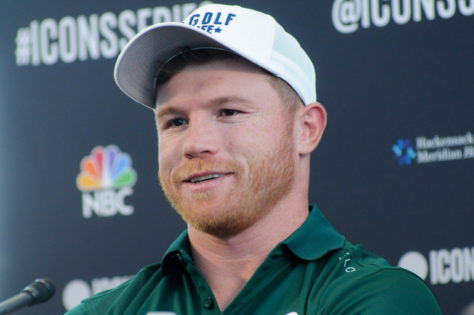The cage may seem to be a place of glory, but Tom Aspinall used to see it as a trap. Most fans watch the walkouts, knockouts, and belts, but they rarely hear about what fighters go through to get there. In a brutally honest moment, ‘The Briton’ pulled back the curtain. No hype, no drama, just the facts. His path to the top of the UFC was not easy or comfortable—it was driven by odd jobs, barely enough money to get by, and more than a few instances when he considered giving up entirely.
Speaking on the High Performance podcast, Tom Aspinall discussed the brutal realities of fighting professionally before making it big. “I’ve quit quite a lot of times, to be honest,” he said. “I didn’t want to do it anymore.” It wasn’t because he lacked enthusiasm or talent; it was because he couldn’t survive on it. Outside of the UFC, earning money as a fighter was nearly impossible. Even after getting in, the situation on the lower floors was not much better.
He said he earned between £3,000 and £5,000 per year. (Approximately $3,950 to $6,590) That is not a typo. That’s how little he earned in his early UFC days, fighting numerous times a year and barely buying gas for his car. “We talking about when I first turned professional? So, say I’m having three fights a year—I’m probably making somewhere between three to five grand a year.” So, how did he manage? He hustled. Not as a glamorous influencer, but as part of the daily grind.
Personal training. Teaching MMA. Working security. Cleaning jobs. Driving deliveries. Whatever it takes to get him through the upcoming training camp. “My jobs were always to put fuel in the car, to buy supplements, to buy gloves… just to go to the gym and train,” he said. There was no luxury or backup plan—only pure survival. And here’s the thing: he is not alone. Tom Aspinall’s narrative reflects what numerous fighters have been quietly grappling with for years.
While the UFC as a company makes billions of dollars and Dana White defends the system with his unmoving bravado, the fighters who compete in the Octagon frequently do so with financial stress on their minds. Sure, top fighters earn a lot of money, but they only make up a small portion of the roster. Most are barely getting by, relying on victory bonuses, short-notice fights, and second jobs to survive. This is more than just one fighter venting. It’s about an outdated system that needs to be changed. The interim heavyweight champion’s honesty hit home because he got to the top, and he still says, “Yeah, this isn’t right.” If that doesn’t raise a red flag, what does?
MMA: UFC Fight Night-Volkov vs Aspinall, Mar 19, 2022 London, UK Tom Aspinall blue gloves defeats Alexander Volkov red gloves during UFC Fight Night at O2 Arena. Mandatory Credit: Per Haljestam-USA TODAY Sports, 19.03.2022 23:50:09, 17932212, UFC Fight Night, Alexander Volkov, MMA PUBLICATIONxINxGERxSUIxAUTxONLY Copyright: xPerxHaljestamx 17932212
It is worth noting that what ‘Honey Badger’ claimed is substantiated by data indicating that entry-level UFC fighters normally receive roughly $12,000 to compete and $12,000 to win each fight. Fighting 2-3 times each year costs around $24,000-$72,000 before expenses. Many fighters earn less than $30,000 a year after deducting training, management, and travel fees, forcing them to work part-time to meet living and training expenditures.
So, as Dana White continues to promote pay-per-view points and performance-based incentives, voices like Aspinall’s grow louder. Because, for all of their sacrifice and sweat, fighters deserve more than just a chance at success—they deserve a fair shot at life. And while, for now, they get just peanuts to fight, Jon Jones‘ insistence on a massive pay has put the UFC heavyweight division on hold.
Tom Aspinall reveals why Jon Jones won’t fight him
The financial troubles did not go away when Tom Aspinall became interim champion; they simply changed shape. He’s no longer cleaning gyms to pay for gas, but he’s still caught in a system where the top people make the decisions and the others wait in line. And that is exactly what is happening right now. ‘The Briton’ has earned his shot. He’s prepared, hungry, and vocal. But what about Jon Jones? He’s not moving forward. According to Aspinall, the motivation is not fear, but rather financial.
“Jon doesn’t want to take the risk at the moment,” Aspinall said on the High Performance podcast. “I think it’s down to money, on his side.” He didn’t say it with resentment, but with the quiet dissatisfaction of a man who has waited too long. UFC politics and high wage demands have left him stranded in uncertainty. While Jones negotiates from a legacy standpoint, Tom Aspinall is stuck with a belt that lacks a real champion to unify it against.
He’s held meetings. He’s remained in shape. He has addressed every question put to him. But the one answer that matters—one from ‘Bones’—has yet to arrive. And the limbo is taking its toll. “Well bored” is how Tom Aspinall characterized it, and you can hear the weight in those words. This is no longer about one fight. It’s about a man who has worked his way out of years of poverty and silence only to be silenced again—this time by delay rather than hardship.
‘Bones,’ who is older and more battle-hardened, may be carefully planning his next move. But, while he considers legacy and compensation, Aspinall is left waiting at the door, gloves on and ready to go. What do you think? Will we get to see the two fight in 2025? Let us know in the comments.
The post Overcoming Financial Struggles, Tom Aspinall Raises Doubts on Dana White’s Fighter Pay: “Didn’t Want to Do It Anymore” appeared first on EssentiallySports.



